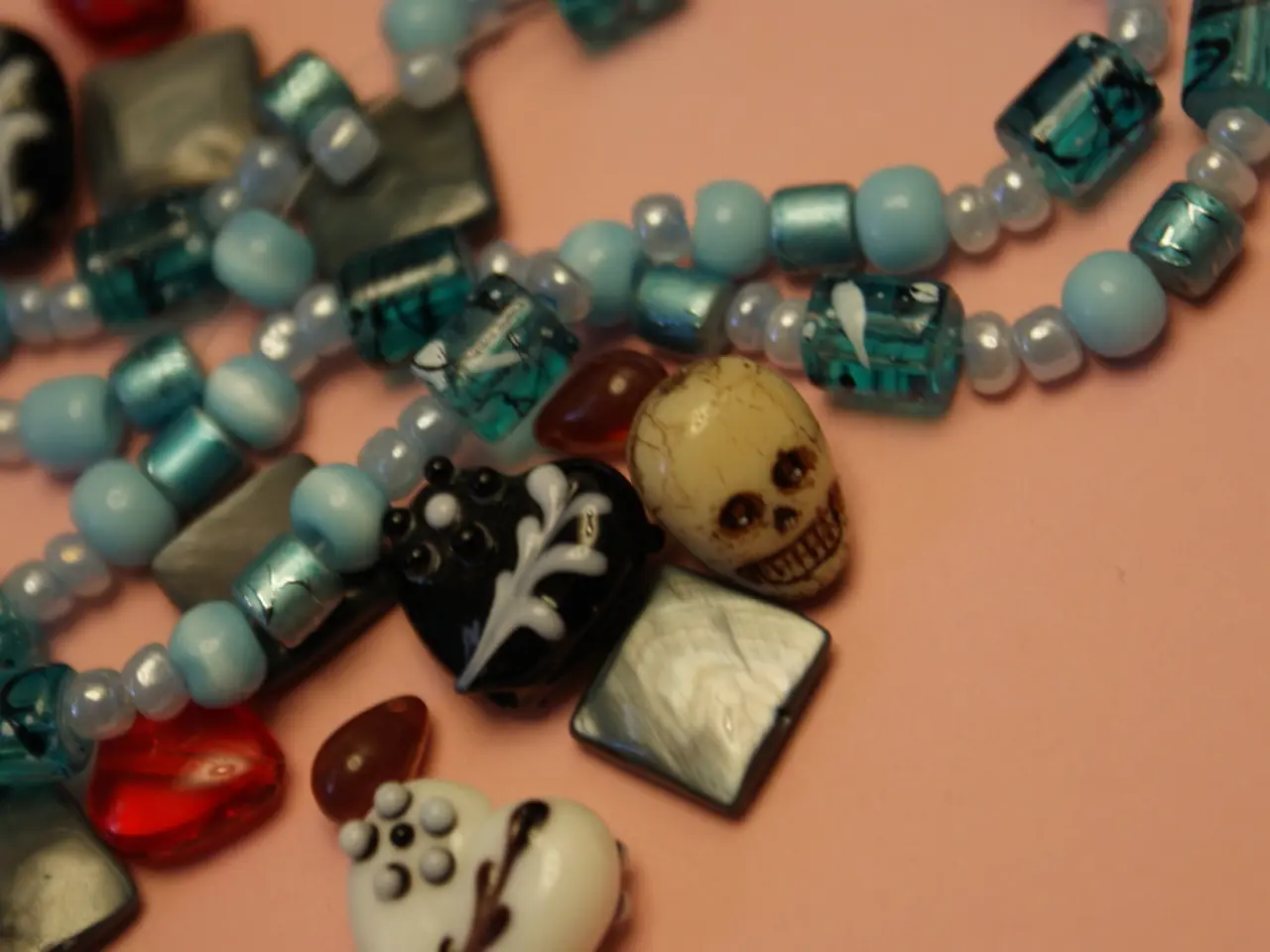Enamel Jewelry Explained: A Guide to This Decorative Art Form
Enamel jewelry, a form of decorative metalwork coated with colored glass, has captivated audiences for thousands of years. Its origins can be traced back to several ancient civilizations, including Egypt, Greece, China, and Persia, where artisans employed the technique to create vibrant, gem-like effects on jewelry [1].
The process involves the application of powdered glass—coloured with metal oxides and mixed with water and an adhesive—onto specially prepared areas of metal (such as silver, gold, or copper) [1]. Once fired in a kiln, the glass melts and adheres to the metal, forming a smooth, durable, and vividly coloured surface [1]. Over time, the cooled enamel can be polished to enhance its luster and colour, resulting in pieces that can be either opaque or translucent [1].
In ancient Egypt, Greece, and during the Sāsānian period in Iran, unpolished enamel was used to imitate precious stones like lapis lazuli or malachite [1]. This approach democratized access to vibrant jewelry across different social strata. The Byzantine era saw significant refinement of enamel techniques, with Byzantine enamels becoming renowned for their detailed iconography and vibrant hues [3].
Over centuries, various enameling techniques emerged, each with distinct aesthetic and technical characteristics. Cloisonné, Champlevé, Basse-taille, Painted Enamel, Plique-à-jour, and other methods spread across Europe and Asia, influencing both religious and secular art [1].
Enamel jewelry was not only a marker of status and beauty but also a medium of cultural exchange. Byzantine enamels, for example, were highly prized across Europe and the Islamic world, showcasing the interconnectedness of medieval societies through trade and diplomacy [3]. In many cultures, enameled jewelry held symbolic meanings related to power, spirituality, and identity [1].
The painstaking craftsmanship required for enameling elevated the status of jewelers to that of artists. The revival of historic techniques, such as those by the Castellani family in 19th-century Italy, highlights the enduring appeal of enamelwork as a marker of quality and tradition [4].
Enamel jewelry offers endless possibilities for self-expression, making it an excellent choice for those who want jewelry that's both beautiful and conversation-starting. Russian enamel, for instance, is particularly known for its intricate designs and religious icons, with the Faberge eggs being famous examples [1]. Native American enamel jewelry frequently features nature-inspired designs and bold color combinations, while Japanese Shippo enamel work is known for its delicate designs and often features nature motifs like flowers and birds [1].
Proper care of enamel jewelry is essential to preserving its aesthetic appeal and material value. Enamel jewelry should not be exposed to extreme temperature changes, as this can cause the metal to expand and contract, potentially cracking the enamel [1]. Harsh chemicals, ultrasonic cleaners, household cleaners, perfumes, and some hand sanitizers should be avoided when cleaning enamel jewelry [1]. Regular professional assessment benefits valuable or historical items, helping to preserve their aesthetic appeal and material value [1].
Enamel jewelry has a long and prestigious history, spanning multiple civilizations and continents, representing one of the oldest continuous decorative arts traditions [1]. Its durability, both literally in the resilience of the objects and culturally in its continued practice, speaks to its lasting significance in global decorative arts [1]. Today, enamelwork remains a celebrated art form, cherished for its historical depth, technical complexity, and visual splendor [1][3][5].
- In addition to being a timeless symbol of beauty and self-expression, enamel jewelry can also serve as a bridge between various fashion-and-beauty trends and cultures, such as the famed Faberge eggs in Russia and native American nature-inspired designs.
- As technology advances, the potential applications of enameling techniques may extend beyond traditional jewelry to include home-and-garden décor, gadgets, and even artificial-intelligence-powered devices, revolutionizing the world of decorative arts.
- One can trace the history of enamelwork through various periods of art, including the ancient civilizations and the Byzantine era, up to modern times, where it has been cherished not only for its artistic qualities but also for its symbolic meanings and cultural significance.




